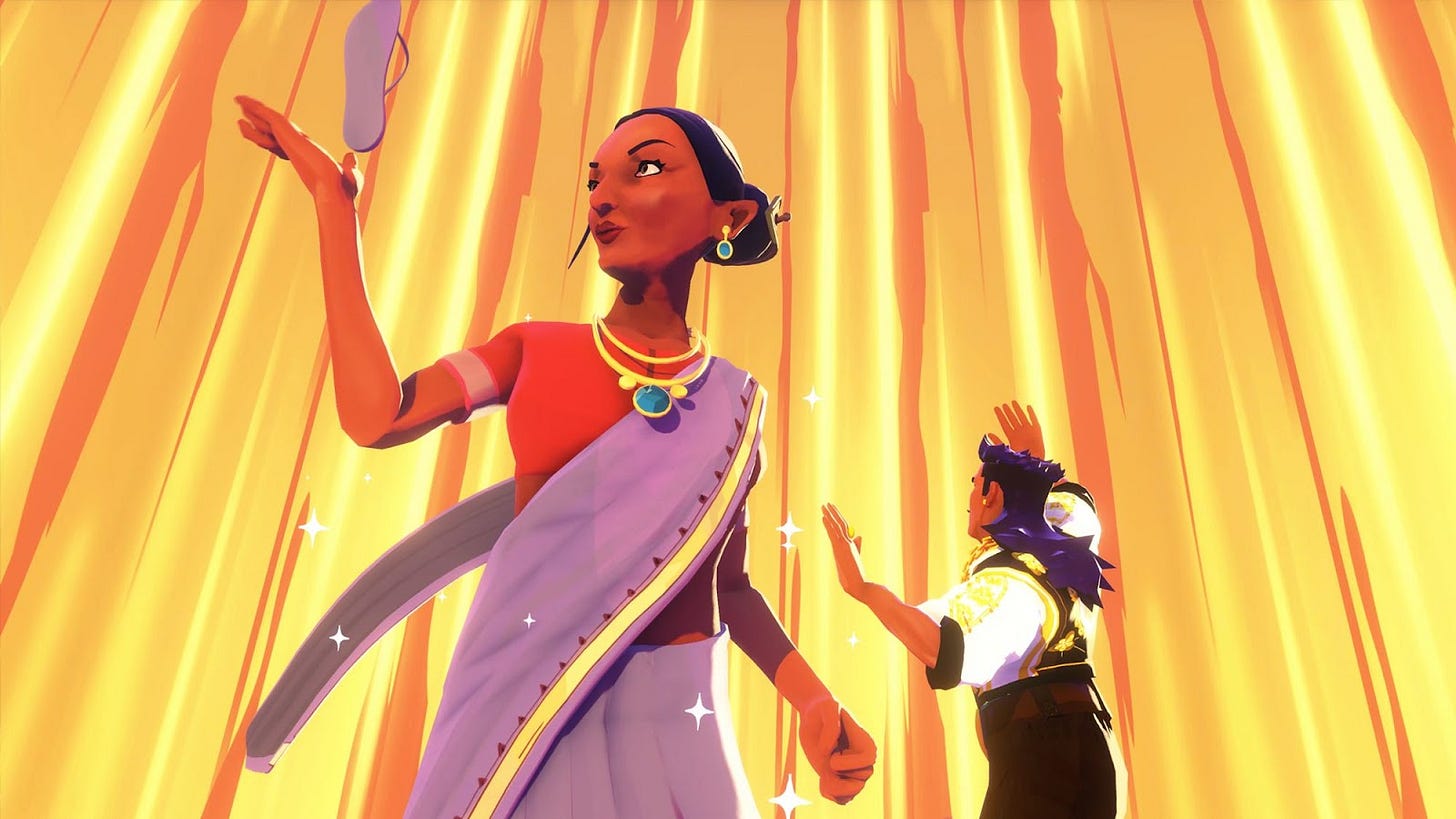The Rise of South Asian Game Developers: A Quest for Representation
Words by Dr. Jabbar (jibberjabbar)
Welcome to the Brown History Newsletter. If you’re enjoying this labor of love, please do consider becoming a paid subscriber. Your contribution would help pay the writers and illustrators and support this weekly publication. If you like to submit a writing piece, please send me a pitch by email at brownhistory1947@gmail.com.
Don’t forget to check out our SHOP and our Podcast.

The Rise of South Asian Game Developers: A Quest for Representation
'I remember as a child pleading to my parents for a Game Boy and "Pokemon Red," arguing that if I couldn't have real pets, digital ones would do. Eventually, I got my wish, and those sprites on screen changed my life, introducing me to a world I could escape to. As video games are able to immerse players in narratives through story, music, and gameplay, making it hard to step away.
Fast forward to 2023, games have evolved from a childish pastime to a market generating an estimated 248 billion U.S. dollars from mobile games alone in 2022, now the industry has evolved to various media. The 2023 Super Mario's movie earned $1.36 billion in worldwide revenue, and platforms like Twitch and YouTube creating gaming influencers such as Markiplier with careers centered on playing games online.
Despite substantial progress in various other media forms, South Asian representation remains notably absent in games. Growing older, I still seek the escapism that could only be provided by video games, but the lack of relatable protagonists often impedes my immersion in these fantasies. The rare instances of representation feel superficial. This contrast stands out painfully as other media witness a surge in authentic South Asian storytelling, showcasing characters like Sheriff Hassan in Netflix’s "Midnight Mass" and Kamala Khan in Disney’s "Ms. Marvel." These critically successful shows offer diverse perspectives and explore fantastical narratives, yet gaming lags significantly in this fundamental aspect.
Although those are two notable examples of South Asian representation in Western media, their absence in video games is disheartening, to say the least. However, this began to change this year with the emergence of two award-winning games, "Venba'' by Visai Studios and "Thirsty Suitors" by Outerloop Studios, marking a historic shift in South Asian game development. In order to properly appreciate how important these milestone achievements are, it's crucial to grasp the historical lack of South Asian presence in the video game industry.
Let's leave 2023 for a moment and go back to February 1991 - and the release of one of the most iconic games of all time - Street Fighter II, specifically with the Indian fighter present Dhalsim. Despite his presence in over 10 games, he's never been voiced by a South Asian actor, even in the latest version he was played by an African-American, Keith Silverstein. This highlights the issue that one minority cannot authentically represent all minorities. While fighting games lack deep storytelling, the problem persists in narrative-driven games featuring South Asian characters. In "Uncharted," Chloe Frazer, half-Indian and half-Australian, was voiced by a white actor, and her ethnicity was revealed only in her spin-off set in a fictional India, which felt like a superficial reveal. Notably, there wasn't a single South Asian writer on the narrative team, compounding the problem. My frustration till now can be seen by Raj Patel, senior brand manager at Relic Entertainment, in his interview with Gamespot, "You'll see a character that looks South Asian, but we're not seeing South Asian stories or characters, which is both good and bad. You don't want to have that every time there is a South Asian, they have to be playing a South Asian character--like speaking to South Asian stories specifically: Normalise it, normal characters can just be South Asian, but you want to go a step further and sometimes see your stories being told." As of this year, I sense a sincere and sustained interest in South Asian representation, which I will now discuss.






